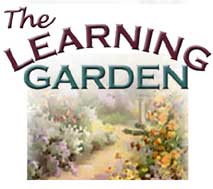
From Seed to Seed:
Plant Science for K-8 Educators
 |
From Seed to Seed: |
|
|
Plant-Plant Relationships Many interesting plant-to-plant relationships exist, covering the spectrum from mutually beneficial to wholly parasitic. An example of a beneficial plant-plant relationship is the "Three Sisters" garden. Native Americans planted three crops together-corn, beans, and squash-knowing that each had something to offer the others. The corn plants grew straight and tall, giving the pole beans something to climb on. The beans, since they are legumes, contributed nitrogen to the soil, which corn needs in abundance. And the large leaves of the pumpkin plants (member of the squash family) shaded out competing weeds. Many schools have created "Three Sisters" gardens in their schoolyards. From these experiences, students have learned not only about plant-plant relationships but also about other plant topics, including historical and cultural plant-people relationships. Visiting a local stand of trees or a forest can reveal another beneficial plant-plant relationship. We are speaking of the simple relationship between a tree and the ground cover beneath it. The tree casts shade, providing habitat for a shade-loving ground cover, and the ground cover in turn keeps more deep-rooted and competitive grasses at bay. |
||||
|
Made possible by a grant from Oracle Corp. Copyright 2001, National Gardening
Association, Inc. For questions regarding this web site, contact Webmaster |